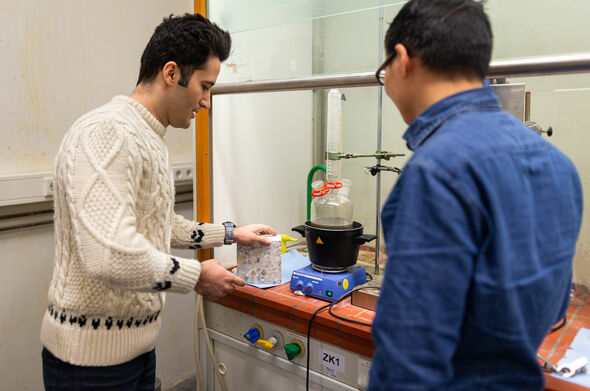
- Research
- 27/01/2020
Building with diapers
Full diapers, they usually disappear from sight as quickly as possible. But not if it’s up to researchers of the Building Materials Group at Built Environment. They investigated, on the initiative of Stapper Duurzaam Advies, whether this enormous pile of waste created by disposable diapers can somehow be used in the building industry. And they found a way to apply it in concrete.
Current practice is to bury diapers on a landfill site or to incinerate it. In Europe, 68 percent of diapers ends up on landfills, and this creates much misery: methane emissions, water pollution, shortage of space and too much stench. Incinerating isn’t much better; this releases heavy metals and dioxin.
It’s not possible to recycle disposable diapers in a cheap, energy-efficient and environmentally-friendly way. They are made of superabsorbent polymers, cellulose and plastic. It is estimated that 2,892 million tons of polymers will be disposed of worldwide in the year 2020, a staggering mass.
Besides their large volume, diapers have two other important features: they contain germs from urine and feces, and they have a significant water absorption capacity. This got the researchers thinking. The most commonly used artificial construction material on the planet is concrete (25 billion tons annually). It is made by mixing water with a binding agent (cement) and a filler. The pH value of concrete is 13, which is high enough to eliminate possible bacteria, viruses and germs.
Flowing
It is important when building with concrete that the mortar can be controlled. It needs to remain properly mixed and must not flow too fast or too slow. That viscosity is determined by adding, for example, ultrafine silicon powder, which is a very costly material.
Hoss Karimi and Qingliang Yu (see photo), supervised by professor Jos Brouwers, investigated whether shredded diapers can be used as a material to influence the viscosity of concrete mortar. As far as they know, this has never been done before. Karimi: “The problem with diapers with urine is that they contain urea, and sulfate and chloride ions; this influences the viscosity and the corrosion around the reinforcing iron bars, should these be present.”
It is clear which concentrations of urea, sulfate and chloride ions cause no harm to the quality of concrete. Using this information, Karimi and Yu worked out a calculation model that calculates which percentage of diaper waste can be safely used in different kinds of concrete. “We found that 1 percent of shredded diaper causes absolutely no harm in prestressed, nonreinforced and reinforced concrete. The quality of the concrete’s strength remains high. And if we substitute 1 percent of 1 percent of the world’s concrete, the aforementioned 25 billion tons, for diapers, you get rid of thousands of tons of polymers each year.”
Unfortunately, the discovery of how diaper waste can be used effectively doesn’t solve the waste problem. Karimi and Yu emphasize that the ions in diapers filled with feces haven’t been looked at. And it could be worthwhile to conduct research into the use of diaper waste in other types of concrete as well. In any case, their research has proven that it’s worth tackling the world’s problems in an unorthodox way.

Discussion